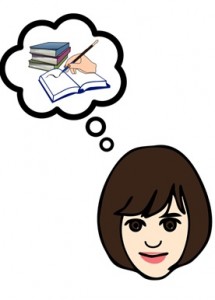 We knew the other day that the Queen of Spain, Letizia, started the International Seminar on Language and Journalism, where she stood up for style guides as the means for unifying writing criteria in order to achieve an efficient communication. I think that the best way to unify writing criteria is to use a single style guide and not multiple ones as is the case right now. This way, for example, if you have to abbreviate “Estados Unidos”, the different style guides will not show different abbreviations, such as EE UU (recommended by the style guide of newspaper El País) or EE. UU. (recommended by RAE) or also EEUU or EE.UU. (which is how you usually find it in texts). Can you imagine if there were several dictionaries with different meanings for the same word? What a mess, right? Well, the same can be said about style guides, why not unifying writing criteria and gather them in a single style guide that all users can follow? It would be very useful to be honest.
We knew the other day that the Queen of Spain, Letizia, started the International Seminar on Language and Journalism, where she stood up for style guides as the means for unifying writing criteria in order to achieve an efficient communication. I think that the best way to unify writing criteria is to use a single style guide and not multiple ones as is the case right now. This way, for example, if you have to abbreviate “Estados Unidos”, the different style guides will not show different abbreviations, such as EE UU (recommended by the style guide of newspaper El País) or EE. UU. (recommended by RAE) or also EEUU or EE.UU. (which is how you usually find it in texts). Can you imagine if there were several dictionaries with different meanings for the same word? What a mess, right? Well, the same can be said about style guides, why not unifying writing criteria and gather them in a single style guide that all users can follow? It would be very useful to be honest.
Apart from this, I would also like to recommend following the criteria indicated in style guides, as we ignore or forget about them very often. Sometimes we simply work for customers that do not pay any attention to these issues and they do not care about how numbers, dates, units of measurements, currencies, quotation marks, among others, are indicated in the text, and, as a result, we do not look for the right way to write them in the document. In my case and unless otherwise specified I follow the recommendations issued by RAE and I encourage translators to do the same. If while translating, you find in your texts an amount with a currency symbol ($1000), quotation marks (“Style Guides”), figures (15,000), just stop for a while and instead of leaving them as is, look in the RAE or other accredited style guide, how those issues should be written in our language. It may take you some extra time at first, but then once you learn how to proceed with all these things, the next translation will be faster and you will know that you are acting professionally and this, in turn, will give you a very good image in front of your customers.
These style guide-related issues that I’m talking about can be given little or no importance at all. I receive texts from authors that give no importance at all to these issues, they do not follow recommendations of style guides and, as such, write these issues as they prefer. But it is our duty, as language experts, to write them as recommended by RAE. It is also true, as I mentioned above, that contradictions may exist between some of the main style guides. For example, when writing figures in Spanish, RAE recommends to write numbers with 5 or more digits with a blank space and not with a dot (the thousand unit), that is, 10 000 and not 10.000, whereas the style guide of the newspaper El País prefers to write figures with the thousand unit, that is, 10.000. Regarding the use of quotation marks, RAE recommends using guillemets («»), whereas the El País prefers double or simple quotation marks. There are also other issues, such as currencies, which sometimes only appear with their symbol ($, €, etc.). This is indeed very short and convenient, it is of course faster to write $ than “dólar estadounidense”; however, this one is the recommendation by RAE when a currency appears without an amount.
In short, this kind of issues is often ignored for different reasons or also, as I mentioned above, there are conflicting recommendations among the main style guides used. The purpose of this article is, first, to join the Queen Letizia in her claim to unify writing criteria in style guides, and also, to encourage translators and writers to follow the recommendations of the style guides when we write in our beloved language. As a result, we will all manage to achieve a more efficient communication.